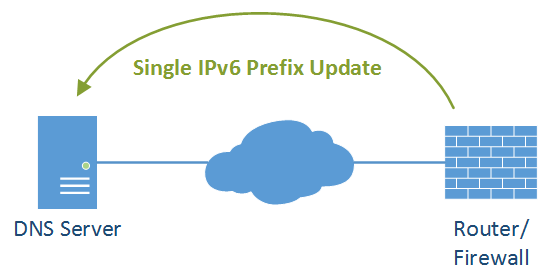I am lucky to have a full dual-stack ISP connection at home. However, the ISP only offers a dynamic IPv6 prefix with all of its disadvantages (while no single advantage). In this post, I am summarizing the limitations of a dynamic prefix and some of the ideas on how to overcome them. I am always comparing the “IPv6 dynamic prefix” state with the legacy “dynamic IPv4 address” situation. I suppose that some of these problems will hit many small office / home office locations during the next years.
Of course, IPv6 ISP connections with dynamic prefixes should only be purchased at private home sites. It is no problem to have new IPv6 addresses there because all connections are outbound. However, many small remote offices (SOHO) might rely on such cheap ISP connections, too. If they provide some servers in a DMZ or other components such as network cameras, building components with IPv6 connections, etc., they will run into these kind of problems. (The remote office could even tunnel every outbound IPv6 traffic through a VPN to the headquarter. But if it wants to use a local breakout, this won’t be an alternative.)
Continue reading IPv6 Dyn Prefix Problems →




